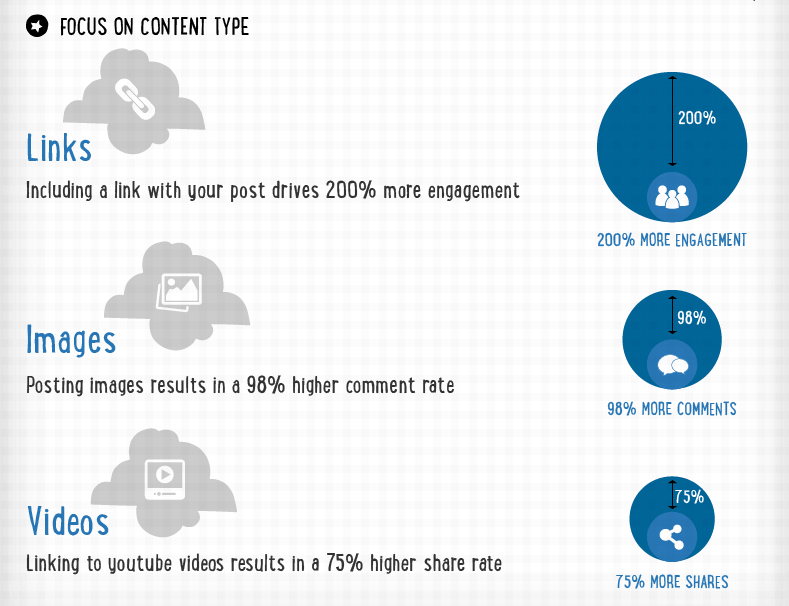LinkedIn may additionally no longer be as massive as Facebook, but if you’re in B2B, it’s essential. Particularly if you’re a B2B content material marketer, LinkedIn has to be phase of your content promotion strategy.
Several sources (like eMarketer) have documented that while they can also get the bulk of their social shares from Facebook and Twitter when it comes to genuine site visitors to their site, LinkedIn is #1. Here’s some research from Investis that shows this:

LinkedIn is alluring but can play tough to get
Table of Contents
While LinkedIn looks like the perfect place to promote content, every now and then it gives content marketers a chilly reception. Maybe you’ve run into this. Maybe you introduced a new put up on a crew and acquired your discussion moved over into the promotions category. Or even worse… possibly your new discussion bought marked as spam.
That can sting, but there’s no motive to give up. You just need to know some of the etiquette guidelines on LinkedIn. And that some strategies work some distance higher than others. To assist you out, we’ve put collectively this list of LinkedIn content advertising tactics so you can begin getting more interest for your content material and your business.
Editor’s note:
In marketing, persistence can pay off. Whether you’re running email advertising and marketing campaigns or advertising your enterprise on social media structures like LinkedIn – every so often you need to resend your message to reach your goals. When you do that, make certain not to crush your target audience by way of paying shut attention to your engagement metrics.
How to promote content material on LinkedIn in 6 ways:
Post daily, and post right.
Build your following.
Use Groups.
Use Pulse, LinkedIn’s Publishing Platform.
Add content to your publications list.
Buy some Sponsored Updates advertising.
1) Post daily, and publish right.
If you can do solely one component to promote your content on LinkedIn, post a new reputation update each day. Just as soon as a day is good, and you can even skip weekends. Posting extra frequently than that is regarded a bit too plenty in accordance with most studies. Don’t fear – you don’t have to manually create a replace each and every day. Use a tool like Buffer or Hootsuite to queue up a week or greater well worth of updates at one time.
Here are some other basics for crafting the perfect LinkedIn popularity update:
Link titles are much less than 70 characters. Any longer and they’ll get reduce off.
Link descriptions have to be 250 characters or less. Sharing a link from a web page on your site? The meta description will be used as the default link description.
Link early and often.
You’ll get double the engagement if you include links in your updates. That’s in accordance with QuickSprout’s infographic, How to Increase Your LinkedIn Engagement by way of 386% excerpted below:


Include images and videos. You’ll get 98% more comments with an image, and 75% greater shares with a video.
Share your SlideShares! LinkedIn offered SlideShare two years ago. Now the two go collectively like PB&J.
Post in the morning. Even as early in the morning as 6 or 7 am your time.
2) Build your following.
Let’s say you’ve just queued up a bunch of notable LinkedIn fame updates, all constructed in accordance to the pleasant practices above. That’s great. But who’s going to see them? Now you need some connections. A lot of connections.
But you don’t prefer just any connections. You want people in your industry. Why? Because if any individual isn’t in your industry, how in all likelihood are they to read, share and have interaction with your content? So go after the people who are your ideal readers – your perfect clients, or customers, or peers.
There are whole books written about building your connections on LinkedIn, however I’ll share a tip with you. With this technique, I get about 90% of my LinkedIn invites accepted, often from people who are rockstars in my industry.
How do I do it? I use Twitter. You see, people follow other people on Twitter notably freely. Many of us have at least a couple hundred followers on Twitter, if no longer quite a few thousand. You can additionally construct your Twitter following by using just going out and following about 30-50 people per day. Again, choose people who are your perfect clients, customers, or peers.
Some of these people will observe you back. About a week or more after they’ve followed you back, go discover them on LinkedIn. Send an invite that says something like this:
“Hello [Their First and Last Name].
We’re following each other on Twitter. [Add a sentence if you’re also in any groups together, and name those groups].
I thought I’d reach out and see if we could connect here, too.
Regards,
Your Name”
This is, of course, a custom invite. Just so you don’t make the same mistake I’ve made a few times, DO NOT simply click on the blue invite button. Clicking that button will ship the default invite. Some people think that default invites downright rude. Whether they’re rude or not, canned invitations commonly get ignored.
Instead of clicking that deceptive blue invite button, click on the little black arrow to the right of the invite button. Then write your custom invite in the pop-up window that appears.
Like this:


and this,


3) Use Groups.
LinkedIn Groups are a content advertising candy save – if you know how to use them. But a lot of people both don’t understand how to promote their content material politely, or they don’t care too a great deal if they irritate other group members. Some LinkedIn customers get so annoyed with all the content merchandising “spam” that they leave the group. Other people stay, despite the “plague” of content material promotion.
Unfortunately, some of the “content promotion” I’ve viewed on LinkedIn ought to legitimately be called spam. And there is sufficient of it on some organizations to warrant the term “plague”. I’m speaking about content material with typographical errors in the headline, or content material that’s all opinion with no lookup to lower back it up. Or content material that looks terrible. Or rehashed content on a difficulty that’s been written about thousands of times.
But you wouldn’t promote content material like that on LinkedIn, right? So I don’t want to say something about content quality. And while I can’t provide you a listing of agencies that it’s ok to promote content to, I can provide you some guidelines:
Read the group’s guidelines about merchandising content before you do anything.
If you do promote content, promote other people’s content material as much as you promote your own.
Don’t promote content all the time. Once a week should be the maximum. Once a month is extra polite.
Be cautious about the use of weblog syndication software programs like Buffer or Hootsuite to routinely submit to a group.
Avoid the use of the words “I”, “me” or “my”. Many LinkedIn corporations filter for these words. Any submit that consists of these phrases can get automatically moved over into the dreaded “Promotions” section, where it’s not likely to get read.
The fine way to promote content material is to find a dialogue that is immediately associated with your content. Add a thoughtful and useful remark that consists of a link to your content. Don’t sell your link – include it as if it was once a reference. This will take 5-6 instances more work than simply auto-posting. But it’s the most ethical and fine way to promote content. Also, make certain that you only add one of these embedded hyperlink comments to every 1/3 or fourth comment you make.
4) Use Pulse, LinkedIn’s Publishing Platform
If you haven’t tried publishing a post on LinkedIn yet, it’s time. Pulse posts can get massive exposure. They can supply greater visitors and interest than if you published the same piece on your site. Unless, of course, you’ve received a super-popular blog.
Noah Kagan of OKDork and Paul Shapiro of Search Wilderness did a designated learn about 3,000 Linkedin articles. Here are just a few tendencies they found:
Use eight images. Yes, exactly eight.
Don’t add movies or multimedia assets.


Use five, seven or nine headings


Write lengthy content. Really lengthy content.


A phrase about republishing content material on LinkedIn – some people republish the weblog posts from their very own blog onto LinkedIn’s publishing platform. Some put up their LinkedIn posts precisely as those posts regarded on their blog. Other writers change the headlines a bit. Still, others do light edits. If you certainly choose to do this, I endorse changing the headline and doing some light edits. Also, don’t repost too many of your weblog posts – write at least some unique new content material for LinkedIn.
Many other entrepreneurs have a distinctive opinion about whether it’s ok or no longer ok to republish posts. I see some extraordinarily able bloggers republishing posts with no changes at all. If they’re doing it, it may be fine. But I’m still wary about it
5) Add content material to your publications list.
LinkedIn honestly gives us an entire section in our profiles for content material promotion. Every headline of a book can be hyperlinked, so you can even consist of a call to motion to on the spot people to click on through.
This is a first-rate way to add deep links to your website or to promote content material from all over the web. Add a few pics or a video to make your publications appear even more interesting.
6) Buy some Sponsored Updates advertising.
If all else fails, you can spend some advertising and marketing dollars and just pay to promote your content. If you’re a very small company, that may also no longer be so attractive. But if you’ve got big new research to find out about that you surely choose to get some attention for, paid advertising can work. Expect to pay at least $2 per click on LinkedIn, and frequently $5 or extra per click. It’s not cheap.
Those are the most oftentimes used ways of merchandising content on LinkedIn. Do you know any tricks you might share with us?
Also, Check, How to Develop Quora Marketing Strategy?


